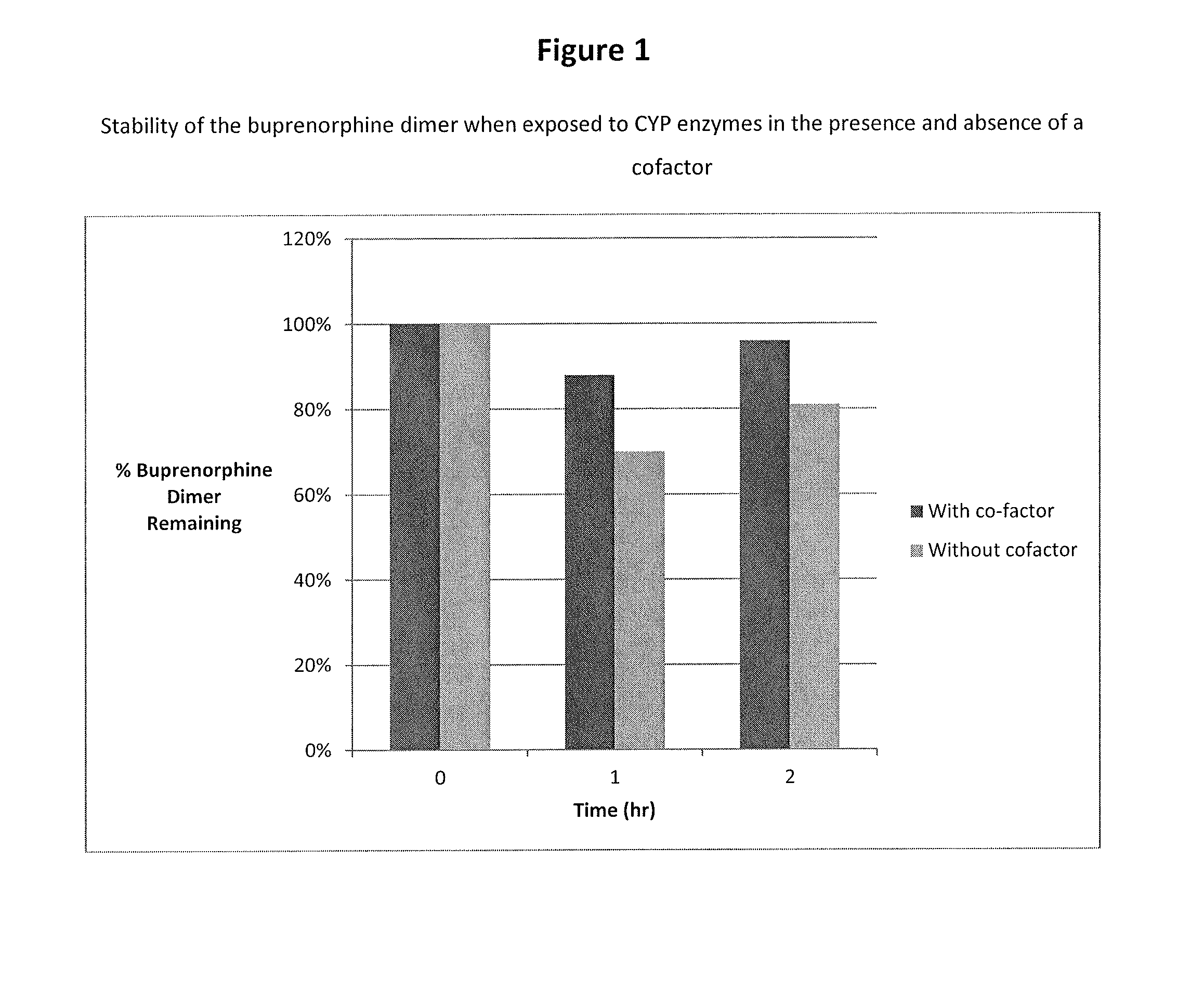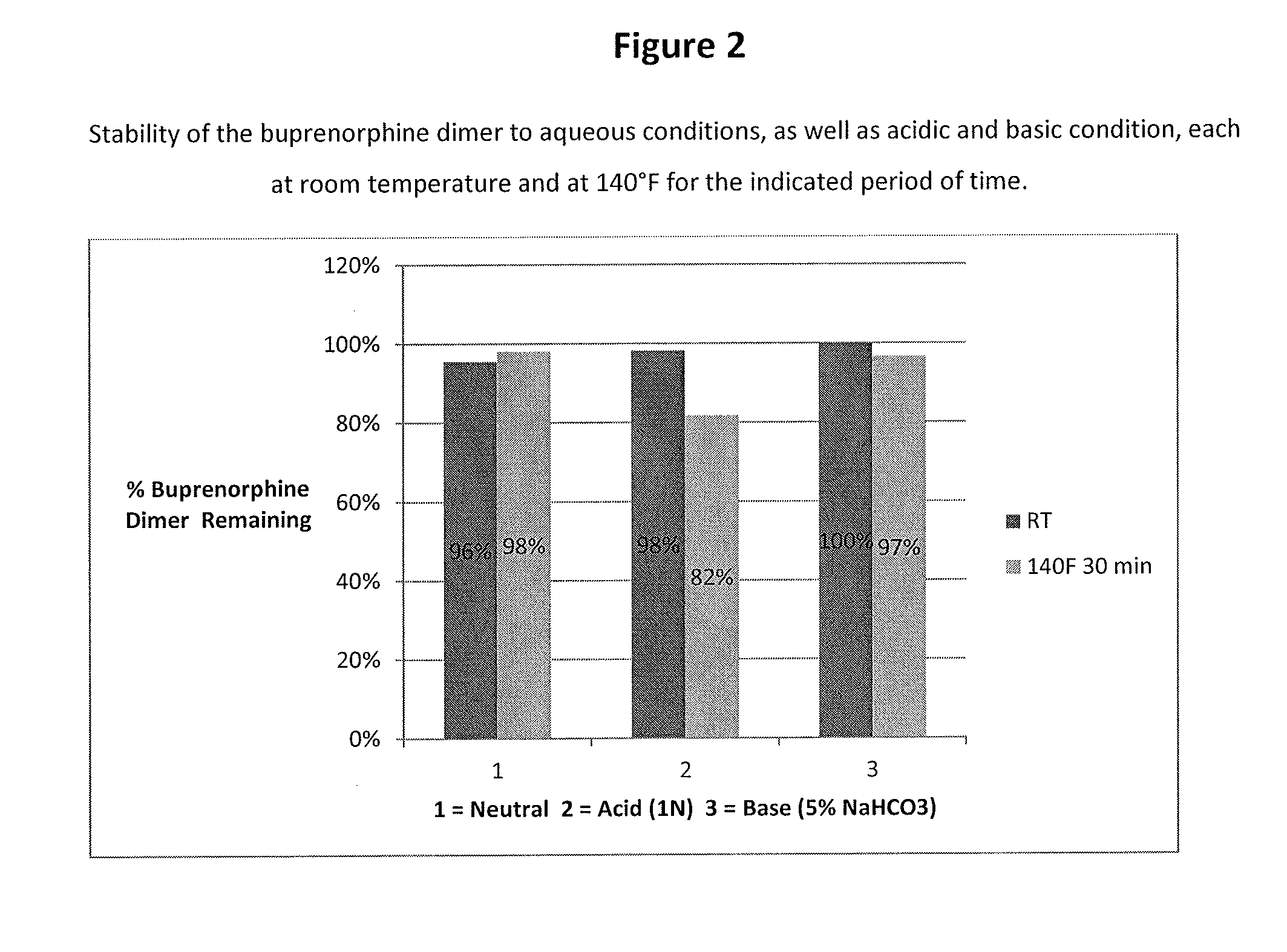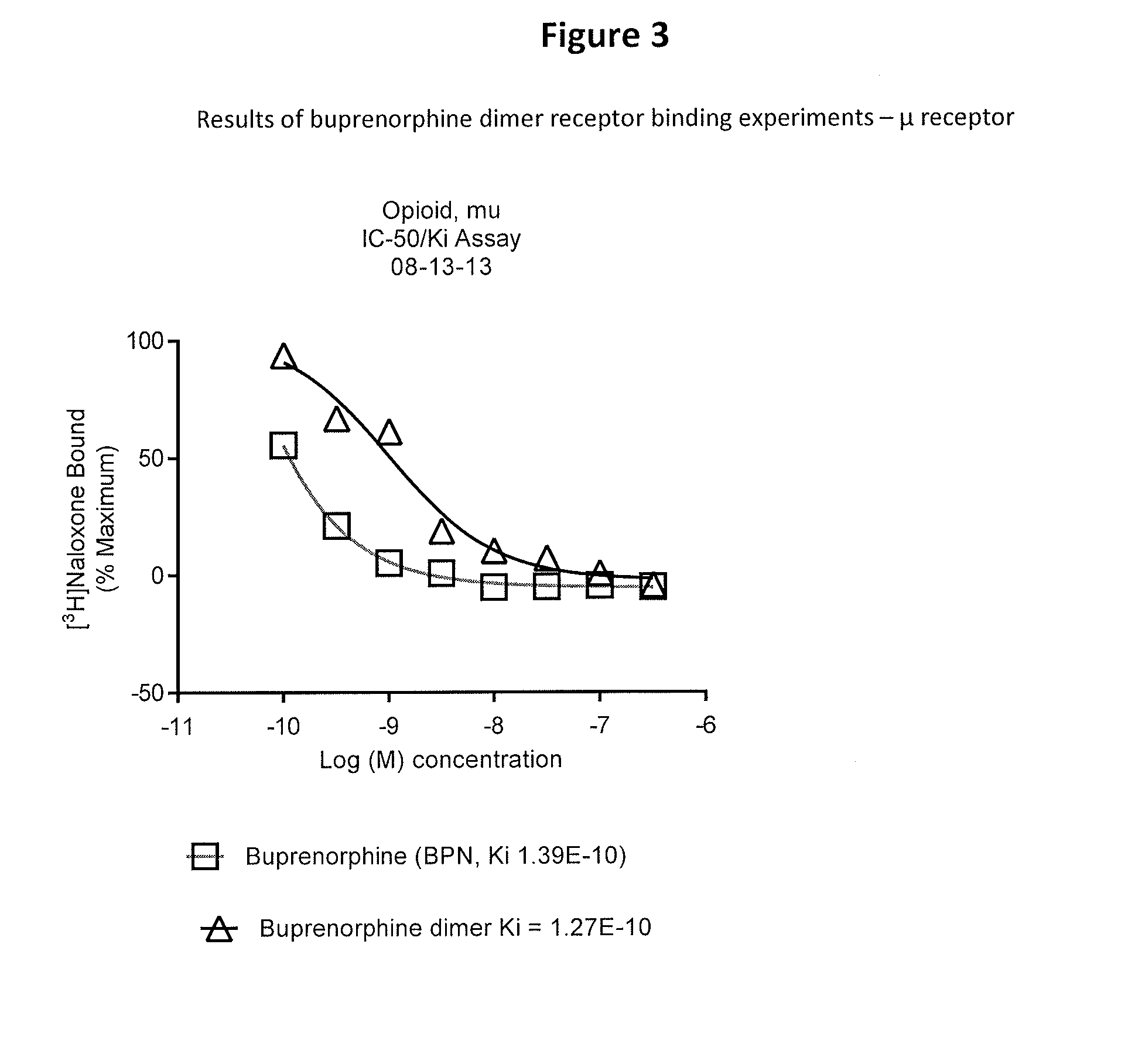Buprenorphine dimer and its use in treatment of gastrointestinal disorders
a technology of buprenorphine and dimer, which is applied in the field of buprenorphine dimer and its use in the treatment of gastrointestinal disorders, can solve the problems of high social cost, high drug resistance, and long half-life of buprenorphine, so as to reduce visceral (colonic) hypersensitivity, effective treatment, and safe prescribing
- Summary
- Abstract
- Description
- Claims
- Application Information
AI Technical Summary
Benefits of technology
Problems solved by technology
Method used
Image
Examples
example 1
Synthesis
[0055]Buprenorphine dimer was synthesized as shown below.
[0056]Buprenorphine HCl-salt (5.0 g, 10.68 mmol, 1 equiv) and potassium carbonate (42.73 mmol, 4 equiv) were charged in a 3-neck round bottom flask followed by anhydrous DMSO (50 ml, 10 vol). The mixture was heated to 60° C. and 1,2-dibromoethane (9.2 mL, 106.8 mmol, 10 equiv) was added slowly. The reaction mixture was stirred at 60° C. for 16 h then cooled to room temperature, diluted with water and extracted with dichloromethane. The combined organic portions were washed with brine, dried (anhydrous Na2SO4), filtered and concentrated under reduced pressure to afford a viscous liquid. The crude product was purified by silica gel chromatography using 0-5% MeOH / DCM to afford 4.2 g (69%) Intermediate 1 as off-white foamy solid.
[0057]Buprenorphine HCl-salt (1.74 g, 3.72 mmol) and potassium carbonate (2.0 g, 14.87 mmol, 4 equiv) were charged in a 3-neck round bottom flask followed by anhydrous DMSO (10 mL). The mixture wa...
example 2
Illustrative Pharmaceutical Compositions
[0059]The following composition can be used for an oral tablet of Buprenorphine dimer.
TABLE 1Ingredients% w / wDimer2Lactose83.6Colloidal Silicon dioxide0.67Microcrystalline cellulose10Croscarmellose sodium3.4Magnesium stearate0.33
example 3
Assays
Metabolic Stability of Buprenorphine Dimer
[0060]Incubations of the dimer (e.g., 1 μM) with human liver microsomes (e.g., 1 mg protein / mL) was carried out using a Tecan Liquid Handling System (Tecan), or equivalent, at 37±1° C. in 0.2-mL incubation mixtures (final volume) containing potassium phosphate buffer (50 mM, pH 7.4), MgCl2 (3 mM) and EDTA (1 mM, pH 7.4) with and without a cofactor, NADPH-generating system, at the final concentrations indicated in a 96-well plate format. The NADPH-generating system consisted of NADP (1 mM, pH 7.4), glucose-6-phosphate (5 mM, pH 7.4) and glucose-6-phosphate dehydrogenase (1 Unit / mL). The dimer was dissolved in aqueous methanolic solution (methanol 0.5% v / v, or less). Reactions were started typically by addition of the cofactor, and stopped at four designated time points (e.g., up to 120 min) by the addition of an equal volume of stop reagent (e.g., acetonitrile, 0.2 mL containing an internal standard). Zero-time incubations...
PUM
| Property | Measurement | Unit |
|---|---|---|
| Mass | aaaaa | aaaaa |
| Dimensionless property | aaaaa | aaaaa |
| Dimensionless property | aaaaa | aaaaa |
Abstract
Description
Claims
Application Information
 Login to View More
Login to View More - R&D
- Intellectual Property
- Life Sciences
- Materials
- Tech Scout
- Unparalleled Data Quality
- Higher Quality Content
- 60% Fewer Hallucinations
Browse by: Latest US Patents, China's latest patents, Technical Efficacy Thesaurus, Application Domain, Technology Topic, Popular Technical Reports.
© 2025 PatSnap. All rights reserved.Legal|Privacy policy|Modern Slavery Act Transparency Statement|Sitemap|About US| Contact US: help@patsnap.com



